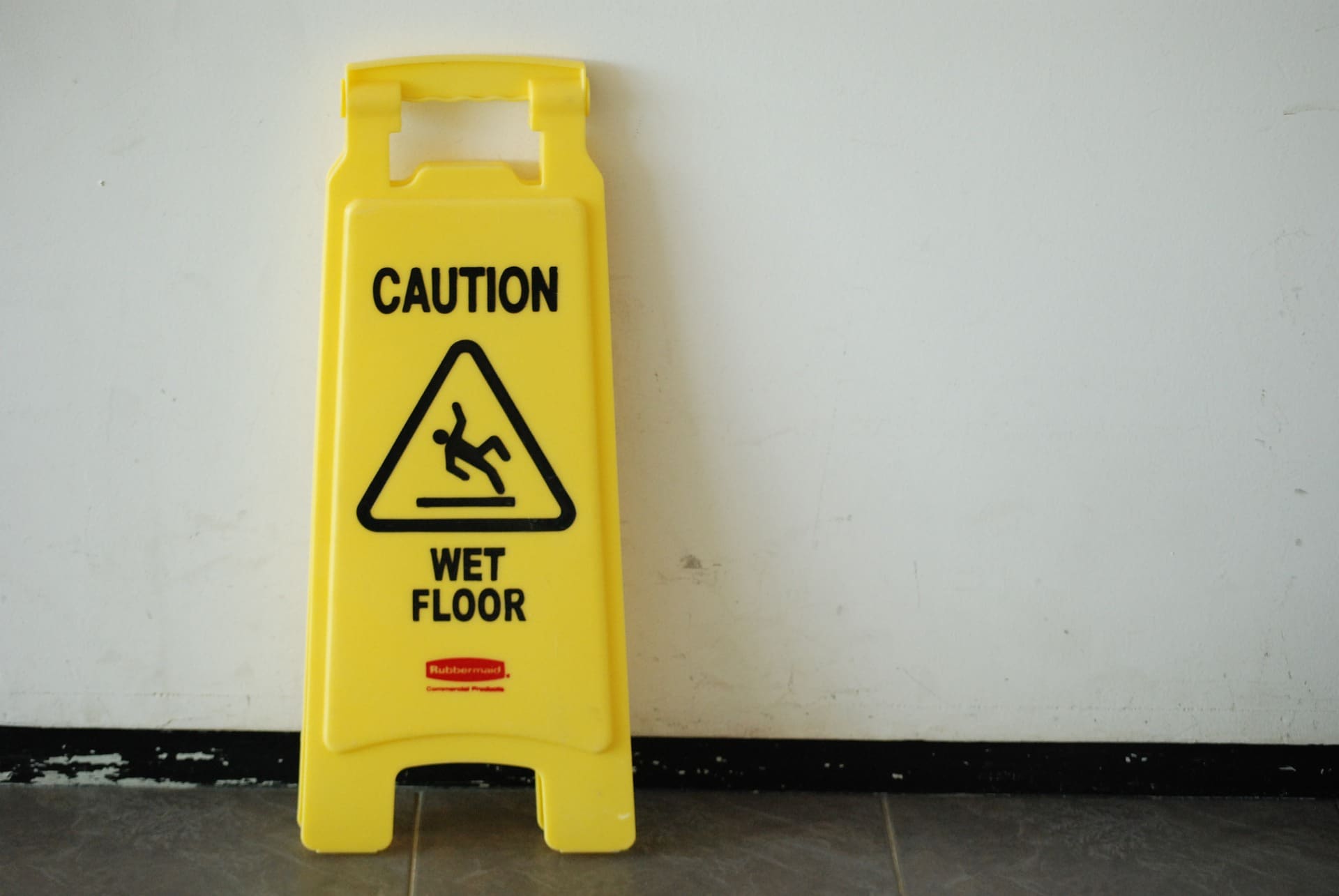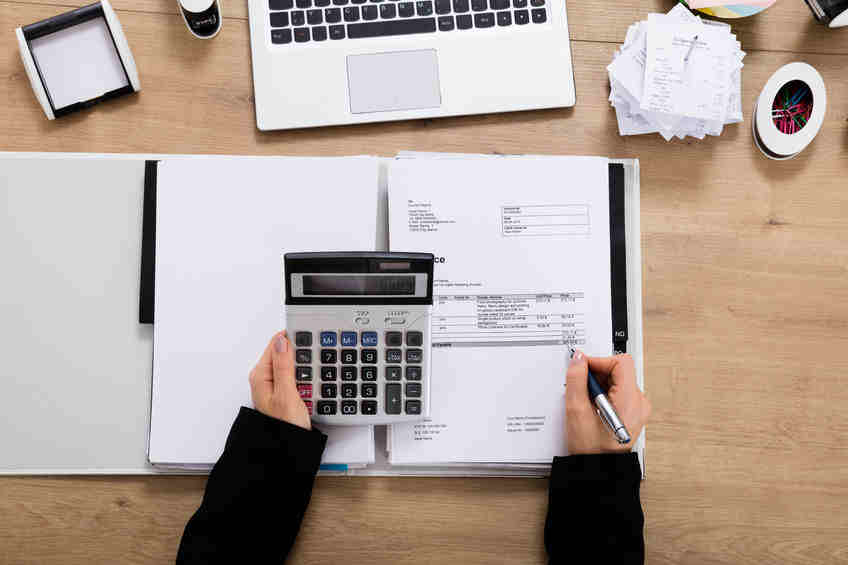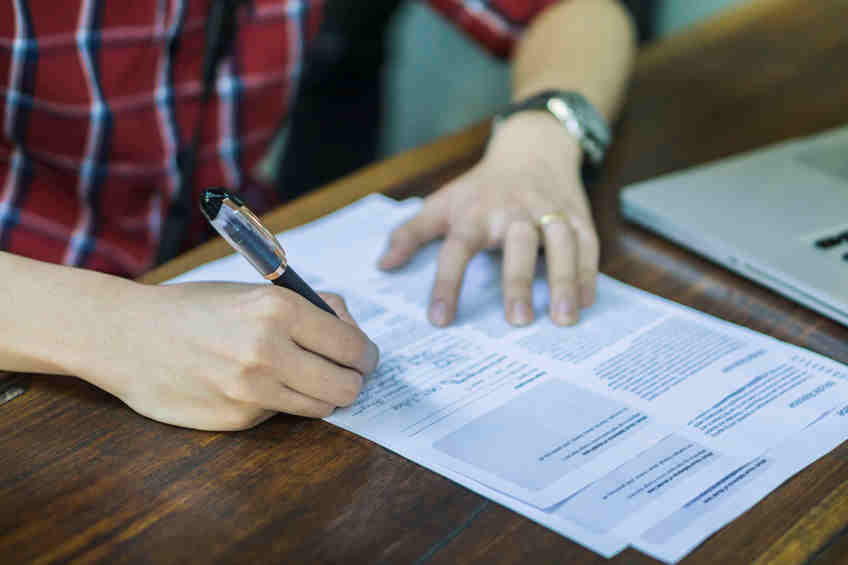
When Is A Wet Floor Sign Legally Required By Law?
A wet floor is an everyday hazard that we see every day. It might be caused by a spill, or recent mopping, or walking in from the rain. Most of the time, it’s safe to reduce the wetness and let the floor dry. However, business owners and commercial property managers have an additional duty: the wet floor sign.
Wet Floor Safety Laws
The wet floor sign isn’t just a courtesy, it’s required by law. According to the liable premises law, business owners are responsible for warning or preventing any foreseeable hazards that might endanger the safety of people on-premises. While you may not have realized the seriousness, wet floors are considered on-par with broken handrails and exposed wires in terms of business owner liability.
A business owner is liable if:
- Their property has known and/or foreseeable hazards
- Insufficient or no measures have been taken to remedy the situation and/or protect nearby people.
So when is a wet floor sign legally required by law? Let’s dive into the specifics of the liable premises laws and how it applies to wet floors.
Duty to Protect from Foreseeable Hazards
The liable premises law requires property owners to protect on-site persons from foreseeable hazards. A broken handrail is a foreseeable hazard because you can easily predict that someone might try to use the handrail and fall. Unforeseeable risk comes from surprises like leaks, storms, or irregular behavior; ex: injury from climbing store shelves.
A foreseeable hazard is any risk to persons on your property that could be predicted or has been reported. If you know about or could have reasonably predicted a safety risk, it is classified as a foreseeable hazard.
Examples of Foreseeable Hazards
- Broken handrail
- Cracked sidewalk
- Slippery floors
- Uneven steps
- Icy parking lots
- Exposed wires
- Regular maintenance
- Ledges, decks, balconies, and steep hill edges
Taking Reasonable Safety Measures
Once a hazard has been identified, reasonable safety measures must be taken to fulfill your liable duty. This means taking action swiftly, prioritizing safety over other actions, and choosing safety actions that effectively protect on-premises persons.
Acting promptly and prioritizing safety go hand in hand. If an injury does occur, it’s vital that you have records of acting as soon as the hazard was noticed and did not delay the remedy for other priorities. It’s also important that the measure so you take actually serve to protect nearby people. A sign hidden behind a bush, for example, is hardly helpful. Scotch-taping a broken handrail might be taking action, but not safety-conscious and effective action.
So What Does That Mean for Wet Floor Sign Protocols? Wet Floors: A Foreseeable Hazard
A wet floor is a common and therefore foreseeable safety hazard. Everyone knows that a wet floor can cause slip-and-fall accidents. This means any time you become aware of a wet floor, it becomes your duty to protect on-premises persons from the hazard. Placing the wet floor sign is the opening move in this safety protection plan.
Predictable Wet Floor Circumstances
In addition to responding to wet floors, you can also predict when the wet-floor hazard will appear. When your staff mops the floor, this creates a known type of hazard. Likewise, any day that is rainy outside can create wet floors in the lobby and at each entrance. Your ability to predict the wet floor hazard factors into responsibility and liability. Taking initiative and anticipating wet floors (ex: on rainy days) shows you are proactive about wet floor safety.
Enacting the Right Safety Measures
Once you are aware of a wet floor, your duty to protect takes two stages. The first is to warn others of the hazard. This is where your wet floor sign comes in. Once the wet floor sign is placed, a puddle of any origin becomes an identifiable hazard for everyone in the room. You have fulfilled your duty to help people keep themselves safe.
The second step is cleanup. Using a mop or other means, the moisture should be reduced. This ensures that the floor will dry within a reasonable amount of time exposed to the open air. After an area has been mopped clean with minimal water left on the floor, the hazard should evaporate within 15 minutes to an hour.
When to Place the Wet Floor Sign
1. When the floor is freshly mopped
The most common time to place the wet floor sign is during and after routine mopping. Place the wet floor sign as you begin to mop to mark which areas of the floor are or will soon be dangerously slippery. Leave the wet floor signs up over areas that you have mopped, placed 10-15 feet apart to mark further wet floor areas.
2. When a puddle is detected or created
No matter where it came from, puddles should always be treated as a slippery floor hazard. Leaks dripping from the ceiling or spilled drinks are equally dangerous in causing slip-and-fall injuries. If there’s a puddle, place a wet floor sign over it or very close to it. Then arrange to have the puddle mopped up and the floor cleaned. Leave the wet floor sign for up to an hour after the puddle is mopped away.
3. When water is tracked in from the rain
Rainy days can bring a surprising amount of water indoors. It drips in off shoes and pants-hems and raincoats. It puddles under umbrellas hastily closed just inside the doors. This can create a dangerous slick. If you see bad weather (or notice the first umbrella), get the wet floor signs out and place them at each door entrance, and around any wet areas.
Then take steps to reduce the puddles caused by rain. Place heavy mats inside each door, provide an umbrella solution, and mop any puddles that get too deep.
4. Until the mop water evaporates
Finally, leave your wet floor signs in place until the floor is no longer wet. Usually, this means your mop water has evaporated. Mopping can clean up other spills and keep your floors clean on a day-to-day basis, but it still leaves some water behind on the floor. This water on the floor is a slippery hazard until it has time to dry. Depending on the climate and building airflow, drying could take between 15 minutes to over an hour. Be sure to leave your wet floor signs in place until the floors are dry. You can employ fans if you need the floor to dry more rapidly.
When is a Wet Floor Sign Required by Law?
The simple answer to this question is ‘always’. If there’s a glisten of any liquid or gel on your floor, there should be a wet floor sign in place. It should then be mopped and future incidents strategically presented to fulfill your duties for premises liability. A wet floor sign should remain in place while any mess is being cleaned up and then stay until the floor is again dry.
The use of the wet floor sign protects you and your business from the tragedy of slip-and-fall accidents and the challenge of a legal battle. For more insights on safety liability for your business or a commercial insurance consultation, contact us today!




